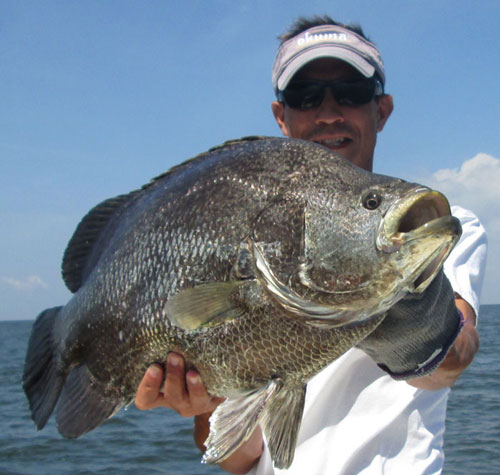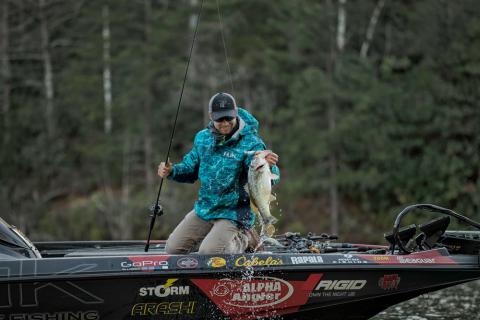 Captain Sonny Schindler of Bay St. Louis, Mississippi, enjoys fishing for tripletails. The tripletail is found primarily in the Gulf of Mexico and along the Atlantic coast from Florida northward to Georgia and even as far north as Massachusetts. An unusual fish that’s often not seen as it floats on its side near, on or under floating debris, the tripletail is a master of camouflage. This fish can adapt its coloration to match almost any type of object near which it’s swimming, and often is caught around channel markers, crab trap floats or any other type of floating debris on the surface or any structure holding close to the surface. You can even catch tripletails floating next to dead animals, sea turtles and sheets of plywood in the ocean.
Captain Sonny Schindler of Bay St. Louis, Mississippi, enjoys fishing for tripletails. The tripletail is found primarily in the Gulf of Mexico and along the Atlantic coast from Florida northward to Georgia and even as far north as Massachusetts. An unusual fish that’s often not seen as it floats on its side near, on or under floating debris, the tripletail is a master of camouflage. This fish can adapt its coloration to match almost any type of object near which it’s swimming, and often is caught around channel markers, crab trap floats or any other type of floating debris on the surface or any structure holding close to the surface. You can even catch tripletails floating next to dead animals, sea turtles and sheets of plywood in the ocean.
We usually start seeing tripletails in April, and they’ll generally stay on Mississippi’s Gulf Coast until the end of September. The best time to fish for and catch tripletails is during the hottest months of the year, generally in July and August. The most productive times to look for tripletails is when the sun is high in the sky, and the Gulf of Mexico is clear. They’re called tripletails because their dorsal and anal fins sweep back toward the tail and appear to be two more tails. The shape of the tripletail resembles a freshwater bream, and some people call tripletails the bream of the sea. Tripletails also are one of the most delicious of all the saltwater fishes, like the bream is of the freshwater fishes.
You may think the tripletail is a lazy fish, since it lays on its side generally in the shade of some type of floating object. But when you set the hook on the tripletail, it will fight as hard as any fish its size (usually 5-15 pounds, although some may reach 30- 40 pounds each).
We sight fish for tripletails by running our boat near channel markets, crab pot floats and other objects where the tripletail may be holding. Wearing polarized sunglasses, we’ll look next to the buoys to try and spot a tripletail. If we see one of these black fish, we’ll circle the boat, cast up current or upwind of the object where the fish is holding at 3-4 or even 5-feet deep with a bobber supporting a live bait like live shrimp or live croakers. You can fish for them with D.O.A. Shrimp too. Once the tripletail takes the bait, I’ll back up the boat to help the angler pull the tripletail away from the buoy chain or crab trap line to allow the angler to fight the tripletail in open water. Then the angler will have a much better chance to land the fish. Also tripletails are a fly fisherman’s dream fish.
One of the advantages of fishing for tripletail is we can fish for speckled trout, redfish or flounder at first light, and then when the sun climbs high in the sky, we can go tripletail fishing.
To learn more, visit www.shorethingcharters.com.



























